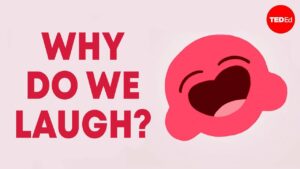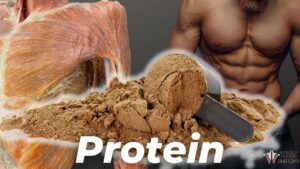In this video, cannabis scientist Amber Wise answers various questions about cannabis from Twitter users. She explains that cannabis can be used for neurodivergent behaviors, pain relief, and medical purposes without any deaths reported. Wise also discusses how cannabinoids stimulate the release of the hunger molecule, Gorillin, which causes the munchies. She explains the difference between psychoactive, psychotropic, and psychedelic substances and clarifies that THC and CBD are considered psychoactive and psychotropic, respectively. Wise touches on the origins of cannabis, differences between indica and sativa strains, the effects of THC and CBD on sleep and dreams, and the classification of cannabis as a Schedule I drug. She also discusses various aspects such as edibles, terpenes, trichomes, the potency of modern cannabis plants, and the effects of cannabis on laughter.

Our Summaries are written by our own AI Infrastructure, to save you time on your Health Journey!
Key Insights:
- There are various reasons why people use cannabis, including for medical purposes, pain management, and to modulate neurodivergent behaviors.
- Cannabinoids in cannabis stimulate the release of the hunger molecule, ghrelin, leading to increased appetite.
- The human body naturally produces cannabinoid molecules that regulate various aspects of biochemistry, mood, sleep, metabolism, and energy levels through the endocannabinoid system.
- Humans have selectively bred cannabis to increase the levels of cannabinoids in the flower, resulting in stronger strains.
- Cannabis is not classified as a psychedelic, but THC can be considered psychotropic as it affects mood and perception of reality.
- CBD can be more effective when combined with other molecules from the cannabis plant, and purified CBD alone may not be as effective.
- Edibles hit differently because the THC is metabolized by the liver, leading to the formation of a different molecule called 11-hydroxy THC.
- The difference between indoor and outdoor weed lies in the molecular profile and consistency. Outdoor cannabis may have a wider variety of cannabinoids, while indoor cannabis can have higher yields and more consistent profiles.
- The distinct smell of cannabis is attributed to terpenes, which are widely found in various plants and contribute to the skunky odor.
- Cannabis trichomes are tiny mushroom-shaped structures on the female flower where cannabinoids and terpenes are synthesized.
- The distinction between indica and sativa strains is not determined by specific terpenes or cannabinoids, suggesting that effects might be subjective.
- THC and cannabinoids can help with falling asleep and staying asleep, but can also affect dreams and REM sleep cycles.
- Marijuana causes dry mouth because cannabinoids interact with neurotransmitters that reduce saliva production.
- Weed can be addictive for some, but the prevalence of use disorders is generally lower compared to other drugs.
- Cannabis has shown potential benefits in cancer treatment, symptom management for multiple sclerosis, and reducing intraocular pressure in glaucoma.
- The classification of cannabis as a Schedule 1 drug is a remnant from the prohibition era, with conflicting responsibility between the DEA and FDA regarding its scheduling.
- Purple color in cannabis can be due to anthocyanin molecules, which are produced in response to cold environments and excess UV exposure.
- Resin, live resin, and rosin are different cannabis extracts, with resin being a general term, live resin extracted from fresh frozen plant material, and rosin being heat and pressure-extracted oil from dried flower buds.
Transcript
I’m Amber Wise, a cannabis scientist, and today I’ll be answering your questions from Twitter. This is Cannabis Support.
From Felicia Ho: Is it okay to smoke weed every day? Some people use cannabis to modulate neurodivergent behaviors or for medical purposes, such as reducing pain or managing arthritis. There have been no deaths attributed to natural cannabis use, and some argue that getting high every day might be safer than getting drunk every day.
From 50 Shades of Green: Why does weed cause the munchies? Cannabinoids and THC stimulate the release of a hunger hormone called ghrelin, which makes us feel hungry. They can also heighten our sense of smell and taste, making food more appealing.
From Rapid RNR: Did you know the human body naturally produces cannabinoids? Our body does make cannabinoid molecules, but they are not the same as the ones produced by the cannabis plant. These molecules regulate various aspects of our biochemistry, including mood, sleepiness, hunger, metabolism, and energy levels. This system is known as the endocannabinoid system.
From Terrible Tony: Is it just me, or is the weed getting stronger? Humans have been selectively breeding cannabis for a long time to increase the concentration of cannabinoids in the flowers. Older cannabis flowers had fewer cannabinoids compared to the ones being grown today. However, there is a physical limit to how much THC a plant can produce, with around 30% being considered the maximum.
From Alms XO: Is weed a psychedelic? There are three terms to define. Psychoactive means anything that reacts with our brain chemistry, while psychotropic affects our perception of reality, mood, and awareness. Psychedelic, as generally agreed upon, includes hallucinations and drastic changes in reality perception. Cannabinoids are considered psychoactive, THC is considered psychotropic, but they are not typically seen as psychedelic.
From Anthology: Does CBD actually do anything? CBD and THC have similar molecular structures, with the main difference being a closed ring structure in THC and an opened ring structure in CBD. While purified CBD alone may not be very effective, a more full-spectrum mixture of molecules from the plant can be more effective for various ailments.
From Filth Filler: Why do edibles hit differently? Edibles take longer to have an effect because they need to go through the stomach, intestines, and liver before entering the bloodstream. In this process, a different molecule called 11-hydroxy THC is formed, which interacts with the body’s receptors differently than inhaled THC.
From Jada Tony Raw: What’s the difference between indoor and outdoor weed? Indoor and outdoor cannabis can have different molecular profiles. A study comparing genetically identical plants grown in different environments found that outdoor cannabis had a wider variety of cannabinoids, including minor and rare ones. Indoor cannabis often has higher yield and more consistent molecular profiles. The choice depends on personal preference and desired qualities.
From Cine Churros: Why does weed smell like that? The distinct smell of cannabis is due to terpenes, which are widely found in the plant kingdom. THC and CBD themselves are odorless, but the skunky smell of cannabis comes from recently discovered sulfur-containing compounds. Drug dogs are trained to detect terpene molecules.
From Robin’s Group LLC: What are cannabis trichomes and why are they important? Trichomes are tiny mushroom-shaped structures found on female cannabis flowers where cannabinoids and terpenes are synthesized. They play a crucial role in producing the desired compounds for aromatic and therapeutic qualities.
From Finger 00: Is there really a difference between indica and sativa, or is it in your head? Indica and sativa are often associated with different effects, such as indica making you feel relaxed or sleepy and sativa being more energizing or creative. However, recent studies have shown no molecular correlation between the two in terms of terpenes or cannabinoids. The effects might be subjective and influenced by personal perception.
From Next Big Crop: What effect does THC and CBD have on sleep and dreams? THC and CBD in combination can help with falling and staying asleep. THC has been shown to reduce REM cycles, which is when dreams occur. Long-term cannabis users who stop using often report vivid dreams returning. The mechanisms behind these effects are not fully understood.
From Optimal NT1: Why does marijuana have THC and is it beneficial for the plant? The plant produces THC for its benefit, not ours. THC is considered a secondary metabolite that may protect against UV rays and pests, as well as possess anti-fungal and antimicrobial properties.
From Amy 99: Why does weed make you high? It was once believed that dopamine release caused the high, but it’s more accurately due to anandamide, a molecule that binds to cannabinoid receptors and affects our mood. The experience varies based on individual biochemistry and the presence of other molecules in cannabis.
From 420 Weed Man Jeff: Does anybody know where cannabis originated from and when? Cannabis is believed to have originated from East Asia, including eastern parts of China, based on recent genetic profiling. The earliest evidence of cannabis cultivation dates back to around 12,000 BC, while psychotropic and spiritual uses trace back around 7,500 years.
From Ashley Logic: How does marijuana help with cancer, multiple sclerosis, and glaucoma? The effects of cannabis on cancer treatment remain mixed, with evidence showing benefits in managing side effects of chemotherapy and radiation, such as appetite stimulation, relaxation, and relief from nausea. For glaucoma, cannabis and THC can temporarily reduce intraocular pressure. Specific formulations have also shown promise in helping multiple sclerosis patients.
From Mike in Mahea: Why is cannabis still classified as a Schedule 1 drug? The classification is a remnant of the prohibition era. Schedule 1 means no accepted medical benefit. The DEA controls drug scheduling, while the FDA oversees food and drugs in the US. There is some finger-pointing between the two organizations, but rescheduling and descheduling are different processes. Some argue for complete descheduling to allow broader use and research, whereas rescheduling could restrict access to pharmaceutical applications.
From Fat One Bear: Why does weed turn purple? The purple color in cannabis is due to molecules called anthocyanins, which plants produce in cold environments. Anthocyanins can absorb excess UV energy and act as UV protectors. Additionally, genetics can play a role in the color of cannabis flowers.
From River Rock Co: What’s the difference between resin, live resin, and rosin? Resin is a general term used for various sticky oils or extracts from the cannabis plant. Live resin is extracted from fresh frozen plant material, preserving the original terpene profile. Rosin is produced by applying heat and pressure to dried flower buds, causing cannabinoids and terpenes to ooze out.
That concludes all the questions. I hope you learned something today, and until next time.





